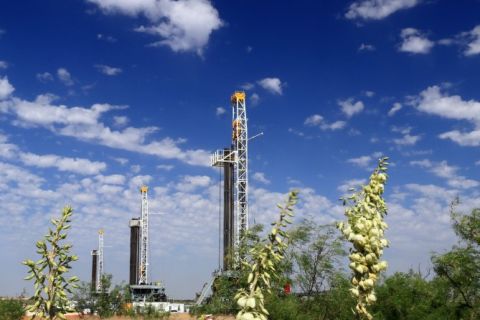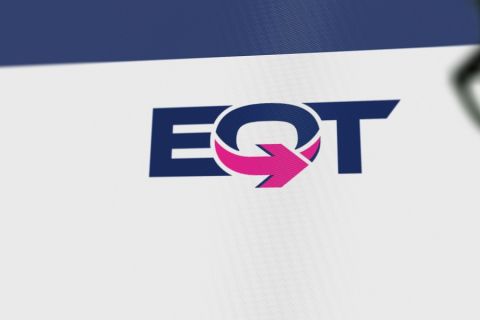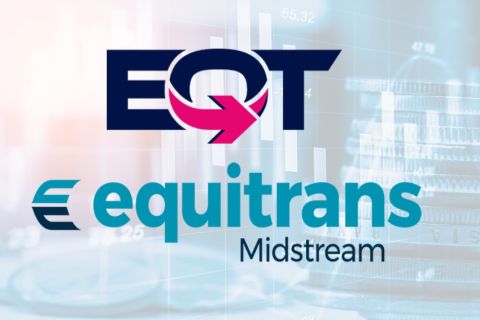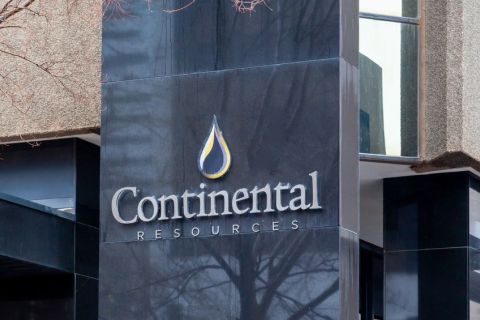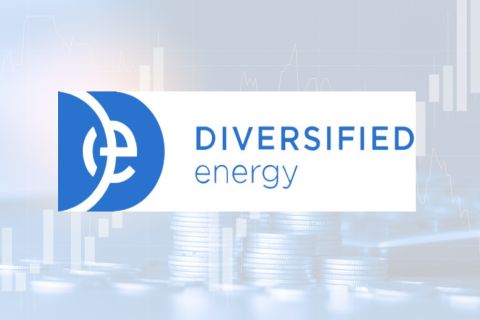
Occidental Petroleum's 2018 capital program guidance rose to $5 billion, up from $3.9 billion. (Source: Shutterstock.com)
Houston-headquartered Occidental Petroleum Corp. (NYSE: OXY) has increased its capital budget by $1.1 billion for high-return, short-cycle oil and gas projects, having hit its low oil price breakeven goals six months ahead of schedule, boosted profit and shed noncore assets.
The company’s 2018 capital program guidance rose to $5 billion, up from $3.9 billion.
Occidental set out in early 2017 to lower costs enough to break even at $40 per barrel of oil, enabling the company to cover shareholder dividends and capex with more cash coming from its oil and gas operations.
“During the quarter we exceeded the 80,000 boe/d growth target we set for the Permian Resources team in early 2017. All of our business segments contributed to the success of our breakeven plan and continue to perform better than expected,” Occidental CEO Vicki Hollub said during the company’s second-quarter earnings call Aug. 9.
The outperformance helped Occidental, one of the biggest players in the Permian Basin, to generate about $2.5 million more cash flow than the company planned for this year based on a WTI oil price of $50 per barrel. This comes in addition to $2.6 billion in proceeds from the sale of midstream assets the company expects to receive in the third quarter.
RELATED: Oxy Sells Terminal, Pipeline In 2 Deals Worth $2.6 Billion
About 20% of the additional $5.1 billion will go this year toward what CFO Cedric Burgher called the company’s “highest organic returning opportunities.” The rest is allocated for “opportunistic share repurchases and to strengthen the balance sheet,” he said.
Oil and gas companies are benefiting from rising oil prices that have climbed from less than $50 per barrel about this time last year to just under $67 per barrel today. Bottom lines have also been helped by ongoing efforts to bring down costs and gain efficiency while getting rid of noncore assets.
“We can now sustain our dividend at base production with oil prices as low as $40 per barrel and at $50 we can add meaningful production growth for years to come,” Hollub said, noting the company is happy with its achievements but not satisfied. “Our intent is to regain a leading position with respect to return on capital employed.”
On Aug. 8 Occidental reported net income of $848 million during second-quarter 2018, up from $507 million a year earlier. Global production rose to 639,000 barrels of oil equivalent per day (boe/d), up from 594,000 boe/d—above the midpoint of guidance. Most of the growth was driven by the company’s Permian operations, where improved well performance sent production up 46% to 201,000 boe/d.
The company aims to produce between 650,000 boe/d and 664,000 boe/d in 2018. This includes between 207,000 boe/d and 215,000 boe/d from its Permian Resources business, a 54% production growth target over last year.

“We achieved the 80,000 boe/d growth target six months earlier than planned through our step-change in well productivity and steadfast execution,” Jody Elliott, senior vice president and president of Occidental’s domestic operations, said referring to the company’s Permian Resources operations.
He highlighted an Oxy record well in Greater Barilla Draw that peaked at 5,693 boe/d and an Oxy record two-well pad in Greater Sand Dunes with a peak 30-day production of more than 10,000 boe/d. With well productivity improvements, Occidental was able to add 218 undeveloped drilling locations to its less-than-$50-per-barrel breakeven inventory.
A portion of the increased capital is allocated to cover acceleration of time to market and to maintain current activity levels, Elliott said. “Instead of ramping down to a $50 rig activity level in the second half of the year we now expect to operate an average of just over 12 rigs in 2018 and exit the year at 13 operated rigs.”
Capital will also go toward appraisal work for emerging plays across the basin and technologies—including unconventional EOR—and facilities capital to support future production, Elliott added. Appraisal work is planned for the Permian’s Barilla Draw Hoban and New Mexico Red Tank areas—both of which are seeing positive results.
“The Hoban is associated with the Wolfcamp A. We’ve done a lot of delineation work, seismic work, to understand: ‘Is that one big thick area that we can prosecute with a single well and a large frack or do we need to put two wells in two different flow units and optimize the frack to that?’ ... But we are seeing good results and I think it will add inventory in that area,” Elliott said.
The story is “even stronger” in the Red Tank/Loss Tank area, he added, noting the area is near some of the largest wells drilled in the Permian.
“We see multiple benches. We’ve had some appraisal wells drilled there—[we’re] very encouraged,” Elliott continued. “Both in the Sand Dunes proper area and in the Red Tank/Loss Tank we see continued improvement in Tier 1 … So we’re very excited about that.”
He added that about $400 million of the $900 million planned capital increase for Permian Resources will go toward this kind of activity. Occidental hopes this will result in about 17,000 boe/d of production growth in 2019.
Permian Resources guidance for the third and fourth quarters was increased by 6,000 boe/d and 12,000 boe/d, respectively, accounting for the better first-half 2018 results, additional capital activity and operating efficiencies reducing time to market.
However, the market didn’t seem to react favorably to the increased spending news as Doug Leggate, analyst for Bank of America Merrill Lynch, pointed out on the call.
Occidental’s stock was trading at $79.20 per share at about 9:30 a.m. EDT Aug. 9 but dropped $76.54 shortly before the earnings call began at 10 a.m. The company’s stock dipped further around noon before moving up to about $77.76 just before 2 p.m.
“The market seems to be taking a dim view of your increase in spending this morning. What’s behind your decision to step up the pace?” Leggate asked, noting it seemed that the company’s pace of spending has lagged peers.
Hollub said the company’s pace of development is based on maximizing net present value and return on capital employed, taking care not to build infrastructure for peak production but for the life of the development area. The company strived to accelerate its pace, aiming to reach its breakeven milestones, without destroying value, she added. Now, additional development areas are driving the pace for second-half 2018.
“Rather than ramp down we’ll increase to ensure that we can cover these new development areas,” Hollub said. “The pace for us is always driven by ensuring we never get out in front of technology. That we never go at too fast a pace. We never overbuild infrastructure. That has always dedicated our pace. We feel that with lower capital than some of our peers we’ve actually delivered more. We’ve not only delivered more in terms of production in some cases but also in terms in value.”
Velda Addison can be reached at vaddison@hartenergy.com.
Recommended Reading
Permian Activity in ‘Low-to-no-growth’ Mode for First Half
2024-02-22 - After multiple M&A moves in 2023 and continued E&P adherence to capital discipline, Permian Basin service company ProPetro sees the play holding steady.
EQT, Equitrans to Merge in $5.45B Deal, Continuing Industry Consolidation
2024-03-11 - The deal reunites Equitrans Midstream Corp. with EQT in an all-stock deal that pays a roughly 12% premium for the infrastructure company.
EQT Deal to ‘Vertically Integrate’ Equitrans Faces Steep Challenges
2024-03-11 - EQT Corp. plans to acquire Equitrans Midstream with $5.5 billion equity, but will assume debt of $7.6 billion or more in the process, while likely facing intense regulatory scrutiny.
Continental Resources Makes $1B in M&A Moves—But Where?
2024-02-26 - Continental Resources added acreage in Oklahoma’s Anadarko Basin, but precisely where else it bought and sold is a little more complicated.
Diversified Energy Buys NatGas Assets in Runup to LNG Exports
2024-03-19 - Diversified Energy will pay $386 million to buy 100% interest in Oaktree Capital Management’s assets in Oklahoma, East Texas and Louisiana.


